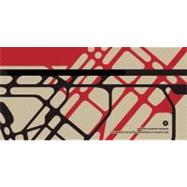Peter Reyner Banham, renowned architectural historian and cultural critic, taught in the architecture program at the State University of New York at Buffalo between 1976 and 1980. During his tenure, inspired by daylight factories and grain silos of the region, he conducted research that led to his seminal book, A Concrete Atlantis, illuminating the relationship between American industrial buildings and European modern architecture. The Peter Reyner Banham Fellowship program at Buffalo was established to celebrate Banham's legacy at Buffalo, and, most importantly, to project new work that is inspired by Banham's foundational body of scholarship on material and visual culture. Each year, the Banham Fellow engages the students and faculty of the department through research, creative activity, and teaching, and the Fellow presents that body of work through an exhibition and a lecture. The projections of the past five Banham Fellows are documented: Jonathan Solomon, Sergio Lopez-Pineiro, Eva Franch Gilabert, Michael Kubo, and Brian Tabolt.








